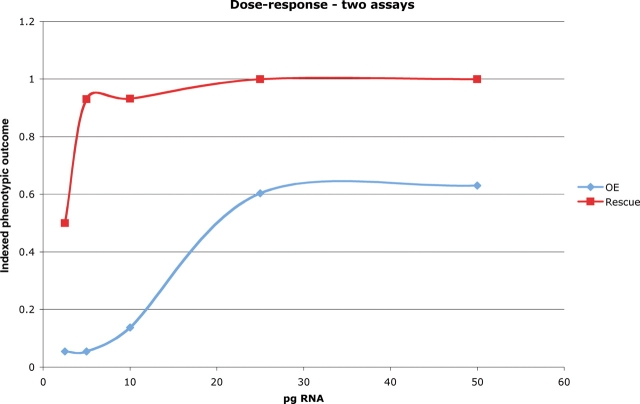Figure 2.
Comparison of the two biosensor assays. Various doses of WT SIX3 mRNA were injected into embryos either with (for rescue assay calibration) or without (for overexpression assay calibration) co-injection of 1 ng Hdl MO. The Y-axis represents the fraction of embryos that achieved the theoretical maximum score on two distinct criteria scales. For the rescue assay, the measurable parameter was the presence of rescued eyes with the theoretical maximum of 100%. For the overexpression assay, the measurable parameter was the distribution of phenotypic classes that were seen and the theoretical maximum was a PI score (see Materials and Methods) of 3, which would be achieved if exclusively class 3 embryos were obtained. Note the rapid transition from half of the embryos rescued by 2.5 pg SIX3 mRNA to nearly all rescued by 5.0 pg SIX3 mRNA, explaining the high variability we observed with this assay (Fig. 5).

